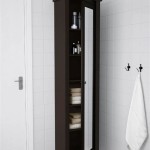iPhone 7 Screen Mirroring To Samsung Smart TV: A Comprehensive Guide
Screen mirroring, also known as screen casting, enables users to display the content of their mobile device's screen on a larger display, such as a television. This functionality is increasingly popular for sharing photos, videos, presentations, and even for gaming, providing a more immersive and collaborative viewing experience. While both iPhone 7 and Samsung Smart TVs are popular consumer electronics devices, their inherent differences in operating systems (iOS and Tizen, respectively) require specific methods to achieve seamless screen mirroring.
This article provides a detailed explanation of how to mirror an iPhone 7 screen to a Samsung Smart TV. It addresses the common methods, potential challenges, and necessary troubleshooting steps to ensure a successful connection. The information presented aims to offer a clear and informative guide for users of these devices.
Understanding the Compatibility Landscape
The primary hurdle in mirroring an iPhone 7 to a Samsung Smart TV lies in the differing wireless communication protocols. iPhones primarily utilize Apple's AirPlay technology for screen mirroring, which is designed to work seamlessly within the Apple ecosystem. Samsung Smart TVs, while supporting various screen mirroring protocols, do not natively support AirPlay in older models. This necessitates the use of alternative methods or workarounds to bridge the gap between the two devices.
Later Samsung Smart TV models (typically those released after 2018) started incorporating AirPlay 2 support. This dramatically simplifies the mirroring process, allowing direct connection without the need for third-party applications or adapters. However, for older models or instances where direct AirPlay connection is problematic, alternative solutions remain relevant and important to understand.
Mirroring via AirPlay (for Compatible Samsung Smart TVs)
If the Samsung Smart TV supports AirPlay 2, the process becomes significantly straightforward. The following outlines the steps involved:
- Ensure Devices are on the Same Network: Both the iPhone 7 and the Samsung Smart TV must be connected to the same Wi-Fi network. This is a fundamental requirement for any wireless communication between the two devices.
- Access Control Center on iPhone 7: Swipe up from the bottom edge of the screen (or down from the top-right corner on iPhone X and later models) to open the Control Center.
- Tap the Screen Mirroring Icon: Look for the icon that resembles two overlapping rectangles. Tapping this initiates the screen mirroring function on the iPhone.
- Select the Samsung Smart TV: A list of available AirPlay devices on the network will appear. Choose the Samsung Smart TV from the list. The TV's name will usually reflect its model or a custom name assigned during the initial setup.
- Enter the AirPlay Code (if prompted): The Samsung Smart TV may display an AirPlay code on the screen. Enter this code on the iPhone to establish the connection. This security measure ensures that only authorized devices can mirror to the TV.
- Enjoy Screen Mirroring: Once the connection is established, the iPhone 7's screen will be mirrored onto the Samsung Smart TV.
During AirPlay mirroring, users can control the playback volume using the iPhone's volume buttons or from the TV's remote control. To stop mirroring, return to the Control Center on the iPhone, tap the Screen Mirroring icon, and select "Stop Mirroring."
Alternative Mirroring Methods for Non-AirPlay Compatible TVs
When dealing with Samsung Smart TVs that do not natively support AirPlay, alternative mirroring solutions become necessary. These typically involve third-party applications or hardware adapters.
Using Third-Party Mirroring Applications
Several applications available on both the iOS App Store and the Samsung Smart TV app store offer screen mirroring functionality. These applications often utilize a combination of DLNA (Digital Living Network Alliance) and proprietary protocols to establish a connection. Popular examples include:
- AirBeamTV: This application is designed to specifically mirror iOS devices to various Smart TV brands, including Samsung. It typically requires installing an app on both the iPhone and the TV.
- Replica: Similar to AirBeamTV, Replica offers screen mirroring capabilities with customizable settings for resolution and frame rate.
- Samsung Smart View: While primarily designed for Samsung devices, this app can sometimes be used to mirror iPhones to Samsung Smart TVs, provided both devices are on the same network. Note that functionality and compatibility can vary significantly.
The general process for using these applications involves:
- Download and Install the App: Install the chosen screen mirroring application on both the iPhone 7 and the Samsung Smart TV.
- Connect to the Same Network: Ensure both devices are connected to the same Wi-Fi network.
- Launch the App on Both Devices: Open the application on both the iPhone and the Samsung Smart TV.
- Follow On-Screen Instructions: The applications will typically guide users through the connection process, which may involve scanning for devices or entering a pairing code.
- Adjust Settings (Optional): Some applications allow users to adjust mirroring settings such as resolution, frame rate, and audio output.
It is important to note that the performance and reliability of these third-party applications can vary depending on the network conditions, device processing power, and the specific application itself. Some applications may also require paid subscriptions for full functionality.
Using Hardware Adapters (HDMI Adapters)
Another option for mirroring an iPhone 7 to a Samsung Smart TV is to use a physical connection via an HDMI adapter. This method provides a more stable and reliable connection compared to wireless solutions, but it requires a physical cable and disables the wireless freedom. The process involves:
- Purchase an Apple Lightning Digital AV Adapter: This adapter connects to the Lightning port of the iPhone 7 and provides an HDMI output. Alternative third-party adapters are also available, but it's recommended to use an Apple-certified adapter for optimal compatibility and performance.
- Connect the Adapter to the iPhone: Plug the Lightning Digital AV Adapter into the Lightning port of the iPhone 7.
- Connect an HDMI Cable: Connect an HDMI cable to the HDMI port on the adapter and the HDMI port on the Samsung Smart TV.
- Select the Correct HDMI Input on the TV: Use the TV's remote control to select the HDMI input to which the adapter is connected.
- Enjoy Screen Mirroring: The iPhone 7's screen will be displayed on the Samsung Smart TV.
This method offers a direct and stable connection, making it suitable for high-bandwidth applications such as gaming or streaming high-resolution video. However, it requires a physical cable and limits the iPhone's mobility.
Troubleshooting Common Mirroring Issues
Regardless of the chosen mirroring method, users may encounter various issues that prevent a successful connection. Here are some common problems and potential solutions:
- Connection Issues: Ensure both devices are connected to the same Wi-Fi network. Check the Wi-Fi signal strength on both devices. Restart both the iPhone 7 and the Samsung Smart TV. Reset the Wi-Fi router.
- Compatibility Issues: Verify that the Samsung Smart TV supports AirPlay 2 or that the chosen third-party application is compatible with both the iPhone 7 and the TV model. Update the firmware on the Samsung Smart TV to the latest version.
- Performance Issues: Close unnecessary applications on the iPhone 7 to free up processing power. Lower the mirroring resolution in the application settings. Avoid obstructions between the devices and the Wi-Fi router. If using a hardware adapter, ensure the HDMI cable is securely connected.
- Audio Issues: Check the audio output settings on both the iPhone 7 and the Samsung Smart TV. Ensure the audio volume is turned up on both devices. Select the correct audio output source on the TV.
- Screen Distortion or Lag: This can be caused by a weak Wi-Fi signal or interference. Try moving the devices closer to the router. If using a third-party application, try a different application. A wired HDMI connection is generally more stable and avoids such issues.
- Firewall or Security Software: Firewalls or security software on the network may be blocking the connection. Temporarily disable the firewall or security software to see if this resolves the issue. Configure the firewall to allow communication between the iPhone and the TV.
By systematically addressing these potential issues, users can often resolve the majority of screen mirroring problems and achieve a successful connection between their iPhone 7 and Samsung Smart TV.

Screen Mirroring To Your Samsung Tv

How To Stream From An Iphone Using Airplay 2

How To Stream From An Iphone Using Airplay 2

How To Stream From An Iphone Using Airplay 2

Cast Iphone 7 Plus To Samsung Tv 2024

How To Connect Iphone Samsung Smart Tv With Or Without Airplay Screen Mirror

How To Mirror Iphone Tv Without Apple Airdroid

How To Connect Iphone Samsung Smart Tv Wireless

How To Mirror From Your Samsung Smartphone Tv

How To Connect Iphone Samsung Smart Tv With Or Without Airplay Screen Mirror








